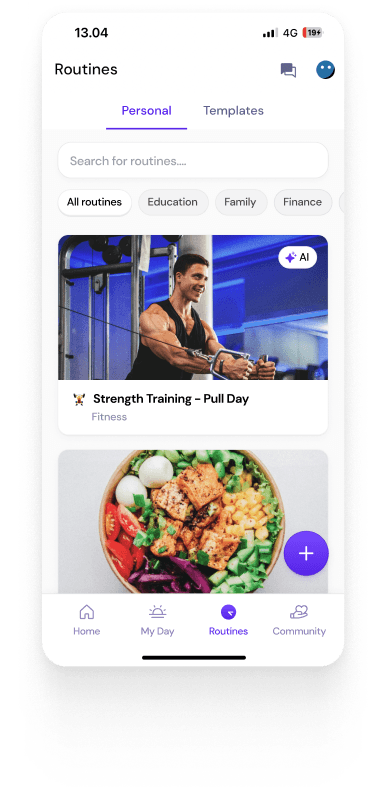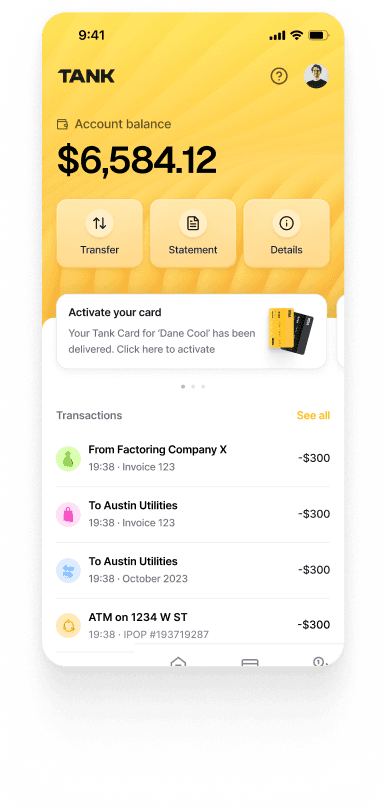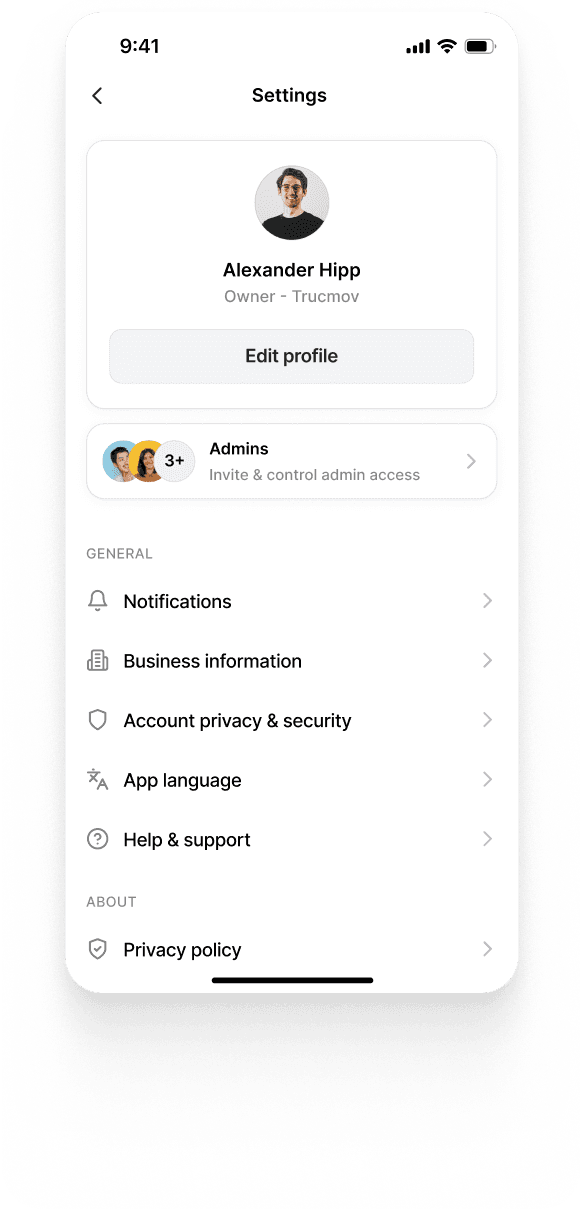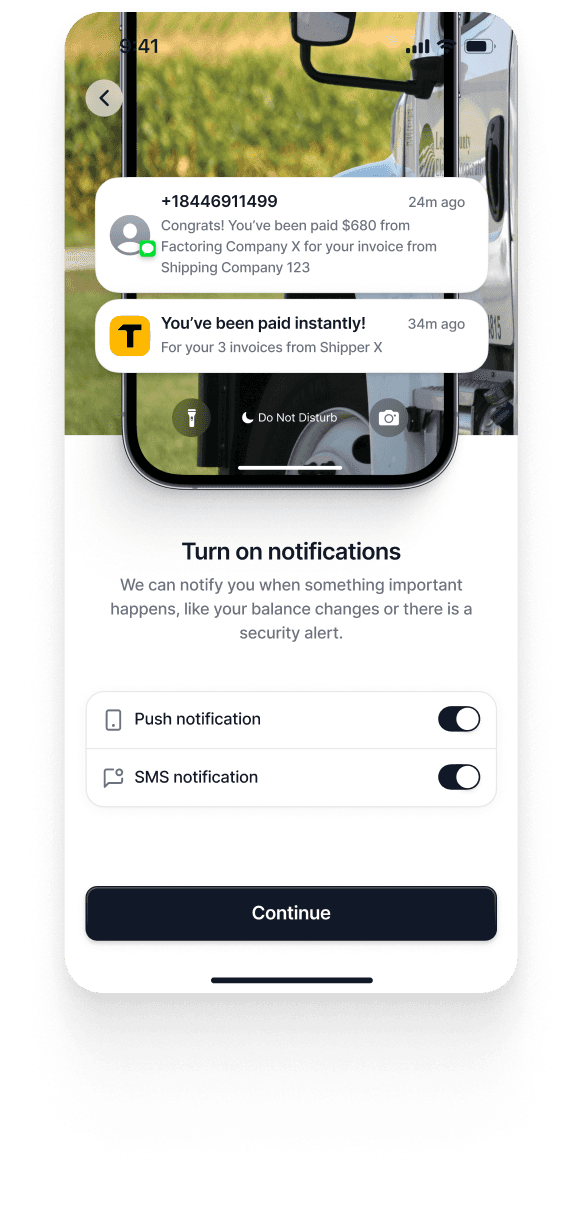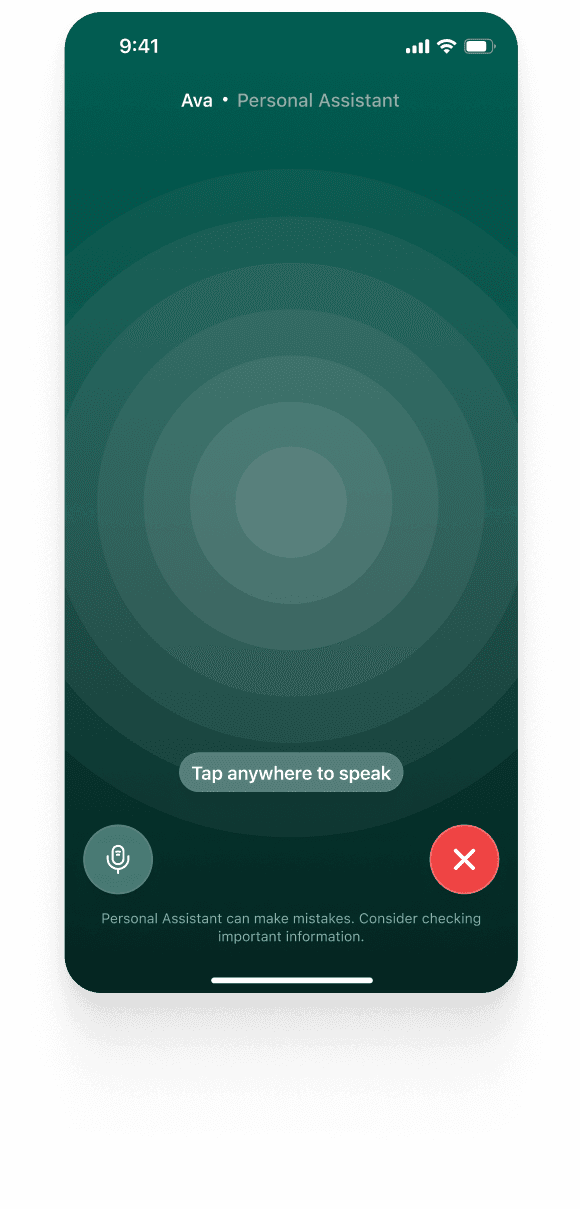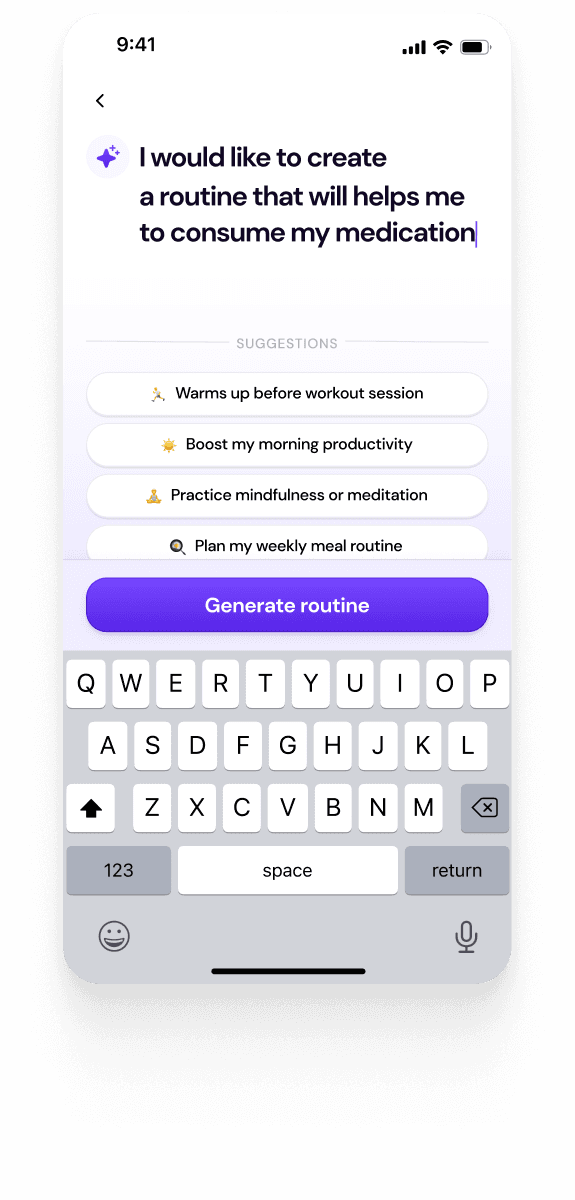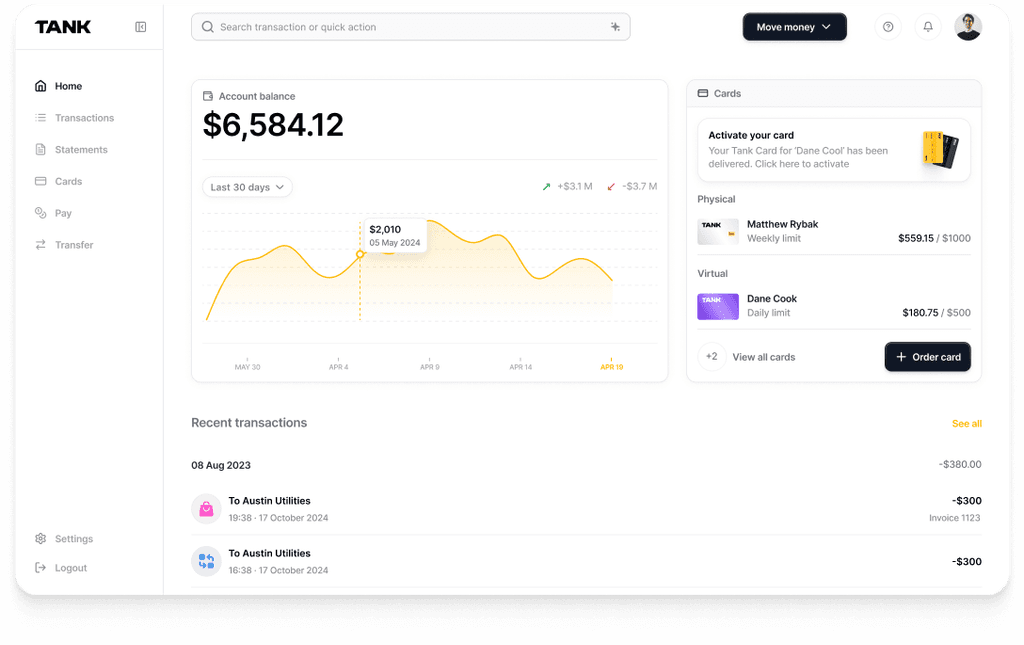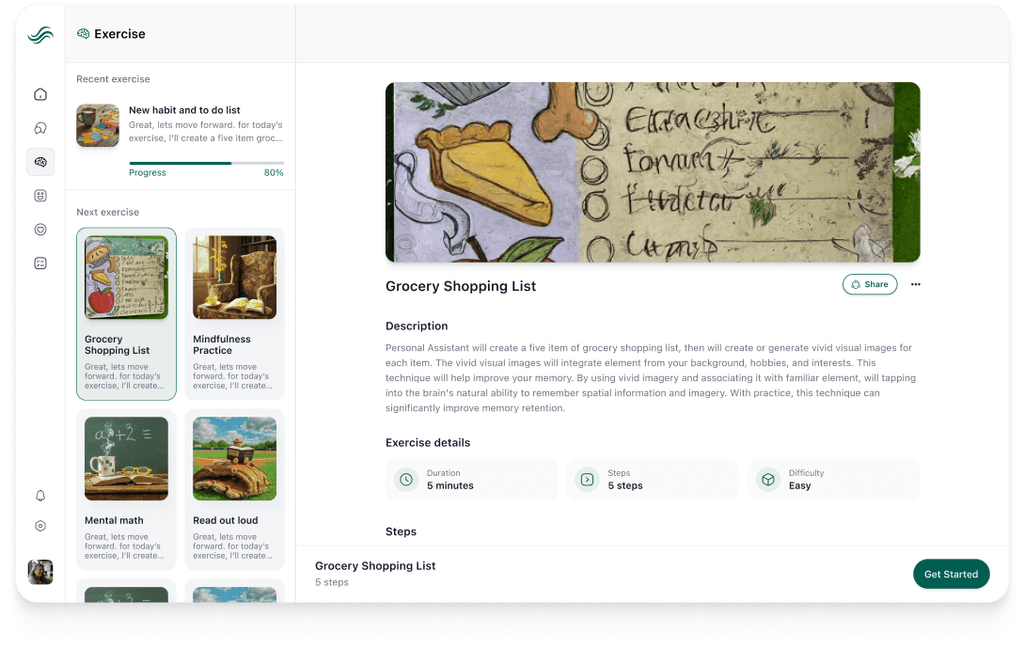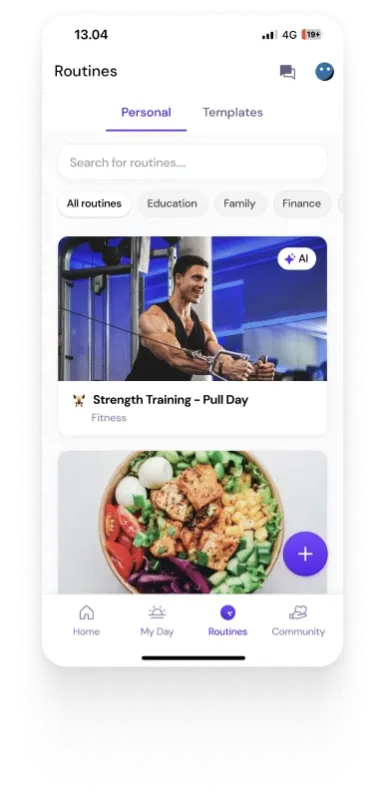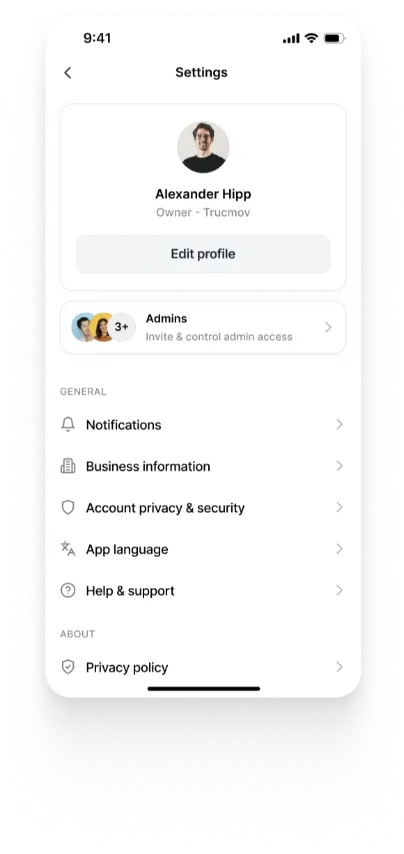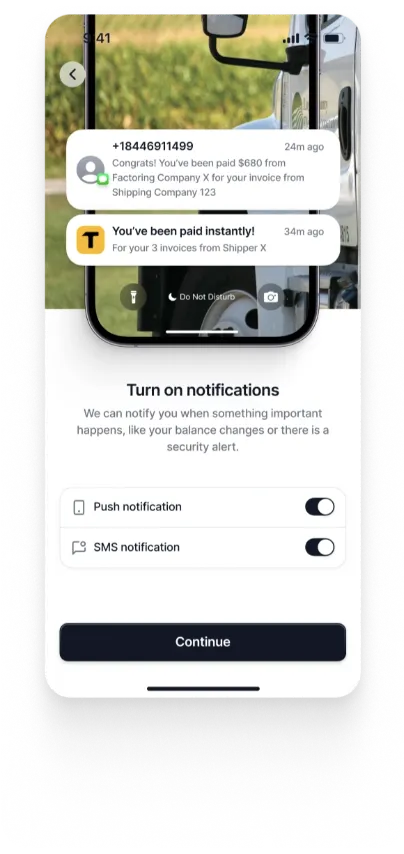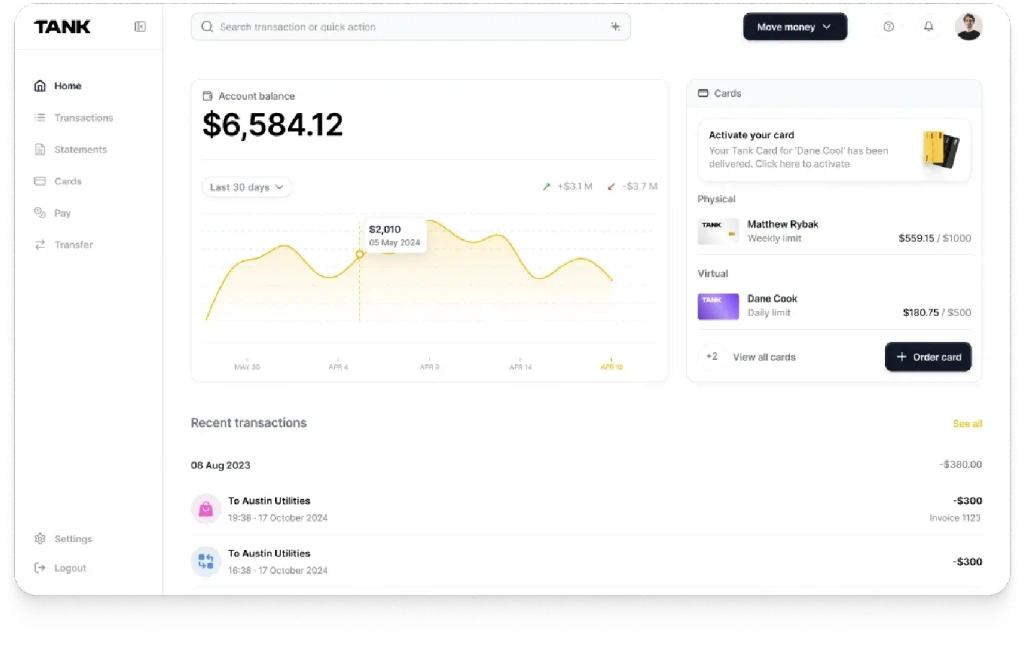What Is an AI Agent? A Technical Perspective
Summary
AI agents are autonomous programs that perceive, reason, and act to fulfill goals, adapting over time through learning. This technical deep dive defines agent types (reactive, deliberative, hybrid), key components, life cycles, and popular frameworks like OpenAI Agents, LangChain, and Rasa. It also highlights real-world applications for startups—from automation to robotics—emphasizing the growing role of agents in scalable, intelligent systems.
Key insights:
Agent Foundations: AI agents continuously sense, decide, and act, distinguishing them from static software by their autonomy and adaptability.
Types of Agents: Reactive agents respond instantly; deliberative agents plan; hybrid agents combine both for flexible performance.
Core Components: Agents integrate sensors (perception), controllers (decision-making), actuators (action), memory, and goals to operate.
Development Frameworks: Tools like OpenAI’s Agents SDK, LangChain, Rasa, and Microsoft’s Semantic Kernel simplify agent orchestration.
Life Cycle & Architecture: Agents follow a loop—initialization, sensing, planning, action, feedback, and learning—within varied architectural models.
Startup Applications: From customer service to autonomous systems, agents help startups scale, automate, and innovate with lean resources.
Introduction
Artificial Intelligence (AI) agents are an essential element in contemporary AI systems. In simple terms, an AI agent is an independent program (or robot) that observes its surroundings and performs actions to accomplish designated tasks. Unlike conventional software that operates according to a predetermined script, AI agents can perceive, make decisions, and execute actions in a continuous loop, frequently adjusting to changes and gaining insights from experiences.
This insight offers a thorough technical exploration of AI agents aimed at developers and startup founders, addressing formal definitions, types of agents, essential components, commonly used frameworks, the usual agent life cycle, architectural patterns, and practical applications in startups.
Defining AI Agents and Their Types
Anything that can be viewed as perceiving its environment through an input channel and acting upon that environment through actuators is the formal definition of an agent in the context of artificial intelligence. To put it another way, an AI agent observes inputs (percepts) from its surroundings and then acts in ways that impact those surroundings. This concept covers a wide range of objects: AI agents include things like a chatbot that responds to user inquiries, a self-driving car that steers itself on the road, a thermostat that regulates temperature, and a chess software that selects moves. Goal-directed autonomy unites them; agents function without continual human guidance, relying on their observations to choose what steps will best forward their goals.
1. Reactive vs. Deliberative Behavior
AI agents are frequently classified by their decision-making processes. Reactive agents function on a stimulus-response framework, selecting actions solely based on the immediate percept and a set of predefined rules or learned guidelines. They do not possess an internal representation of the world nor do they take into account past experiences. This feature renders them quick and resilient in straightforward or clearly defined situations – for instance, a motion-detection light that activates when it senses movement is considered a reactive agent. Nevertheless, reactive agents are unable to strategize or manage intricate, unforeseen circumstances as they lack reflection; they “respond instinctively” to stimuli.
In contrast, deliberative agents (also referred to as intentional or cognitive agents) have an internal representation of their environment and state. They contemplate the world and envision potential future scenarios before taking action. A deliberative agent usually has specific objectives or intentions and employs algorithms (such as search or logical reasoning) to devise sequences of actions to fulfill those objectives. For example, a route-planning robot or an AI scheduling assistant engages in deliberation: it evaluates multiple options, predicts results based on its environmental model, and then selects a course of action. Deliberative agents demonstrate greater adaptability in complex settings but may be slower due to the demands of reasoning and planning.
In order to capitalize on their own capabilities, hybrid agents include elements of both reactive and deliberative tactics. An agent with a hybrid architecture may feature a deliberative layer for higher-level planning and goal management, and a reactive layer for quick reflexive responses (managing simple or time-sensitive tasks). This layering is typical in robotics and autonomous systems. For example, an autonomous car employs deliberative planning to map out the best path to the destination while also adopting reactive behavior for low-level collision avoidance (rapidly steering or stopping for an impediment). Hybrid agents can function reliably in dynamic, uncertain contexts by combining quick responses with long-term planning. Nowadays, a lot of useful AI agents are hybrid, striking a compromise between quickness and vision.
2. Fundamental Components of AI Agents
To function autonomously, an AI agent is built from several core components that mirror the sense-think-act cycle:
Perception (Sensors): The perception module enables the agent to view and collect data about its surroundings. Hardware sensors (cameras, microphones, lidar, etc.) are used in physical robots, while APIs, data feeds, or user input streams may be used in software agents. Raw inputs are transformed by perception into a format that the agent's decision-making module can understand. For instance, a stock-trading agent takes news feeds or market signals as input, and a chatbot agent employs natural language processing to transform user inputs into structured data (entities, intent). Because an agent must frequently make decisions in the face of uncertainty and because its vision of the world may be noisy or incomplete, effective perception is essential.
Decision-Making (Reasoning & Policy): The decision-making unit, also known as the controller or agent program, is the central component of the agent. Based on the agent's goals, internal knowledge or memory, and perceived inputs, this component determines the next course of action. This could be a learnt policy that associates the current state with an action, or it could be a straightforward set of condition-action rules in reactive agents. This entails more sophisticated reasoning in deliberative agents, which search through potential courses of action, assess results, and choose courses of action that advance the objective. Logic engines, if-else rules, machine learning models, and deep neural networks are just a few of the methods that modern AI agents frequently combine to make decisions. A game-playing agent, for example, might make decisions based on heuristic algorithms or reinforcement learning policies, while an AI assistant driven by a large language model (LLM) "reasons" about the user's request (perhaps using a prompt-based chain-of-thought) to decide what to do next.
Action Module (Actuators): To change the environment, the agent must carry out the appropriate action after making a decision. Actuators are the instruments or outputs that the agent uses to impact others, and the action module communicates with them. Actuators are the actual motors, wheels, speakers, grippers, etc. that move or communicate within a robot. Actuators in software could be database writes, network packet transmission, API requests, or message displays. For instance, a virtual customer support representative acts by sending a text answer or starting a workflow, whereas a software agent participating in a strategic game issues commands via the game's API. This part guarantees that the reasoning module's abstract decision is translated into a tangible alteration to the surroundings. A crucial aspect of agent design is making sure that actions are carried out safely and dependably, particularly in physical systems.
Memory (State & Knowledge Base): Usually, an AI agent keeps an internal state or memory of some kind. This can comprise long-term information or learned models about the world, as well as short-term memory of current perceptions (a state representation). An agent with memory can gain experience over time, surpassing one-step reflexes. To recall elements of the world that are not always clearly observable, for example, a model-based reflex agent will update an internal state variable (e.g. remembering the last known location of an object that is currently out of sight). A knowledge basis that encodes facts, rules, or associations is possessed by more advanced agents; for instance, a medical diagnostic agent's knowledge base may include diseases and symptoms. Learning also can be placed in memory, as the agent can modify its internal records or models in response to feedback. For instance, after receiving reward feedback, a reinforcement learning agent modifies its value estimations for activities stored in its memory. There are numerous ways to construct memory, including using variables in databases, neural network weights, semantic knowledge graphs, and code. The design must strike a compromise between the agent's real-time performance requirements and memory size and complexity.
Goals and Reward (Objective Function): An agent is directed by a goal or a set of objectives to promote intentional activity. Goals can be implicitly encoded through a reward function that the agent seeks to maximize (as in reinforcement learning agents) or clearly stated (e.g., "reach location X" or "maximize profit"). This part oversees prioritization and goal tracking. In a basic scenario, a goal could be a desired state that the agent continuously contrasts with its current state, using the difference to guide its subsequent action. A system to settle disputes or select among them according to a priority or utility metric is necessary for more complicated agents that may juggle several goals or sub-goals. The high-level objectives of a domestic robot, for instance, might be security and cleaning; if it senses an intruder (a security danger), that objective might take precedence over regular cleaning. Goal management and decision-making are closely related because, given the information and resources at its disposal, a rational agent should select the course of action that it believes would best accomplish its objectives. Simple boolean conditions to intricate structures like symbolic goal trees or numerical reward signals are examples of goal representations in practice.
These essential elements collaborate constantly. The perception provides information to the agent, which uses its reasoning module to make a decision after consulting its memories and objectives. The agent can function over time as a result of this loop's repetition. A communication module for multi-agent interaction or a "critic" module that assesses the agent's own behavior for learning purposes are examples of extra components that may be included in various systems, but the above are the core building blocks found in most AI agents.
3. Frameworks and Protocols for Building AI Agents
Seldom do developers create AI agents from the ground up. Rather, they rely on protocols, libraries, and frameworks that offer reusable abstractions for learning, action, perception, and decision-making. AI agent frameworks are platforms or toolkits that offer pre-built modules for common functionality, making it easier to create autonomous agents. In order for developers to concentrate on the high-level logic specific to their application, these frameworks handle the intricate "plumbing" of agent development, such as integrating machine learning models, managing tool usage, maintaining state, etc.
One prominent example is OpenAI’s Agents API and SDK. OpenAI views agents as “systems that independently accomplish tasks on behalf of users”, and They released specialized tools to support agentic applications by the end of 2023. Primitives such as an Agent loop (to manage the series of model calls and tool invocations), integrated tool integrations (for online search, file access, code execution, etc.), and an orchestration SDK (to manage intricate multi-step workflows) are all provided by the OpenAI Agents framework. Notably, OpenAI’s Responses API allows developers to combine an LLM with tool usage in a single, streamlined API call. The Responses API and Agents SDK let you create tools (functions) that an agent can call, eliminating the need to manually prompt an LLM to use tools. The framework will automatically understand the model's intentions to invoke those tools and integrate the results into the agent's context. Building agents that can, for instance, take a user inquiry and independently conduct a web search or database lookup to create a useful response is made much simpler by this. Guardrails (ensuring the agent's outputs match specific safety/formatting standards) and tracing (recording and visualizing the agent's thought process step by step) are additional features included in OpenAI's Agents SDK. which are crucial for debugging and trust in agent behavior. To put it briefly, the OpenAI Agent API is a high-level interface that allows you to provide a goal and the tools that are accessible. The AI, supported by models such as GPT-4, will then plan and execute the work, looping as necessary until it is finished.
Beyond OpenAI’s ecosystem, there are many other agent development frameworks gaining traction, each with different focuses:
LangChain: This is an open-work framework that has become popular for building agents powered by LLMs. LangChain provides abstractions to chain together language model queries and tool calls in an agent loop. It offers modules for connecting to external data sources, maintaining long-term memory, and managing multi-step conversations or reasoning processes. Because of its modular architecture, LangChain makes it easier to integrate various components and allows flexible orchestration of complex AI workflows. A developer can easily create an agent using LangChain, for instance, that reads a user's question, determines it needs to perform a computation or retrieve data from a URL, calls a tool to accomplish this, and then utilizes the outcome to create a final response. All of this is coordinated within the LangChain agent loop. It features agent and chain abstractions that codify best practices for tool-using AI agents, and its design places a strong emphasis on extensibility (allowing integration with numerous LLM providers and tools).
Rasa: An open-source framework designed specifically for creating voice assistants and chatbots, or conversational agents. Rasa offers a comprehensive platform for action execution, discourse management, and natural language understanding (NLU). In order to determine how to react to user inputs (questions, orders, etc.), a Rasa agent employs a dialogue policy and operates on training data for intents and entities. Because Rasa places a strong emphasis on conversation-driven growth, agents can learn from actual dialogue samples. It may be integrated with unique Python code for actions and provides developers with fine-grained control over the dialogue flows. Rasa provides the flexibility and on-premises deployment capability required if your firm needs a virtual customer care agent or a FAQ bot with a clear process (essential for data privacy).
Microsoft’s Semantic Kernel: Microsoft's new SDK facilitates the more agent-like integration of AI models into applications. Developers can provide "skills" (functions) and "plans" that an AI agent can employ with the help of the Semantic Kernel. Under the hood, it allows an LLM to select which talent to employ in order to meet a goal by using prompt templates and planning algorithms. Though open-source and extremely flexible, this is conceptually comparable to OpenAI's function calling. It is a component of the movement toward LLM function orchestration frameworks.
Hugging Face Transformers Agents: A language model can access tools from the Hugging Face hub thanks to the Agent interface that Hugging Face offers. To assist in resolving a user query, a Transformers agent might, for instance, choose to execute a particular machine learning model (such as an image classifier or translator). This framework combines several models to accomplish activities that are beyond the scope of a single model. The agent (controller) model selects tools, while other models carry them out.
Multi-agent orchestration frameworks: Frameworks such as LangGraph and Crew (CrewAI) have emerged in response to the increasing complexity of agent systems. Building upon LangChain, LangGraph allows for multi-step workflows depicted as graphs, incorporating simultaneous tool usage and branching. CrewAI focuses on coordinating multiple agents with different roles towards a shared goal. When a difficult problem needs to be divided into manageable chunks, these can be helpful. For instance, one agent may be responsible for conducting web research, another for performing numerical computations, and a third for synthesizing the findings. Frameworks for multi-agent orchestration control the shared memory and messages between these agents.
In multi-agent system research, it is also important to take note of standard communication protocols, such as the FIPA Agent Communication Language (ACL), which specify how agents can communicate structured messages (for activities like collaboration or negotiation). The fundamental concept of having a well defined interface for agent interactions is comparable to that of today's LLM-based agents, even though such protocols are more prevalent in academic and industrial multi-agent simulations. The "protocol" for tool use or inter-agent communication in the majority of contemporary agent frameworks is really online APIs or function calls (e.g., one agent calling another via an API, or all agents reading/writing from a common memory store).
With these frameworks and tools, building a functional AI agent has become more accessible. The framework takes care of most of the how, allowing the developer to define what the agent should do. A prototype travel assistant agent could be created, for instance, using OpenAI's Agent API. The agent would take a user's request, "Plan me a 5-day trip to Japan under $1000," and break it down into smaller tasks. For example, it might call a hotel API, a flight search tool, an LLM to create an itinerary, etc., until it comes up with a comprehensive plan. In the meantime, the framework calls the appropriate APIs, handles timely formatting, and builds up results into the agent's state. This significant development in AI engineering is the capacity to put together intricate, tool-using behavior with little glue code.openai.github.io
Life Cycle of an AI Agent
Designing an AI agent involves understanding its life cycle – the sequence of stages it goes through to perceive, decide, act, and learn. Regardless of the agent's complexity, it usually functions in a never-ending cycle of perception and action. This loop (as well as the agent's development process) can be divided into multiple stages:
Initialization: The required data is initialized and the agent is formed. The architecture of the agent is configured, initial knowledge or parameters are loaded, and connections to the environment are made at this phase. For instance, when a manufacturing robot agent boots up, it may connect to the factory control system via a network and load calibration data for its cameras. This is where the machine learning model, such as an LLM or policy network, is loaded into memory if the agent utilizes one. At this stage, the agent may also be given its basic configuration or aim or goals. In a startup context, initialization might involve providing API keys, loading a knowledge base, or reading user preferences that the agent will need. Essentially, this phase prepares the agent to start operating by ensuring it knows its objectives and has access to its sensors, actuators, and any prior knowledge.
Perception and Planning: The agent goes into a sense-think loop after it has started running. After obtaining inputs from sensors or data sources, it first assesses the existing situation. The agent modifies its internal state or view about the world in light of the new percepts, which could be a single observation or a collection of inputs over a period of time. The agent then plans or makes decisions depending on its goals and observations. This stage is simple for reactive agents, who may immediately use a rule or learnt policy to translate the perception into an action.Deliberative agents may invest a lot of time in this step, weighing several potential courses of action or action sequences (a plan) before selecting one. Searching a state space, applying algorithms such as A* or minimax, or applying logical rules to reasoning could all be part of the planning process. Natural language reasoning can be used in the planning phase of many contemporary AI agents, particularly those that use LLMs. The agent "thinks aloud" (in token sequences) about the issue, determines what information or resources are required, and creates a plan (typically dynamically). An agent may internally loop over possibilities during this iterative "sense-think" phase before selecting an action (or action sequence) to carry out.sci.brooklyn.cuny.edu
An autonomous drone agent is a tangible example: it uses its camera and lidar to detect obstructions, then it plots a collision-free route to its destination, maybe using a path-planning algorithm.
Action Execution: The agent acts on the strategy or decision after it has been made. The agent's actuators or output interfaces carry out the selected action (or the initial phase of a plan). This could be any action that affects the environment, such as sending a message, triggering an API call, or moving a robot's motor. Practical factors like speed, concurrency, and error handling are very important during this stage. For example, when an activity fails or has an unexpected result (a physical motor stalling, or a web API returning an error), an agent may have to deal with the circumstance. An action verification phase, which verifies that the action produced the desired result, is frequently included in robust agents. If the action is a part of a larger plan, the agent may re-plan if anything has changed or schedule further actions. For transparency (which is crucial in enterprise settings to keep an eye on the agent's activities), agents may additionally record or log their actions during multi-step operations. An AI agent for customer service might, for instance, generate a support ticket in a database as an action. It would then utilize the relevant API to write the ticket and verify that it was produced correctly.
Feedback and Sensing of Results: Following an action, the agent looks at the environment's response. Since it completes the loop on the agent's prior action, this is worth mentioning as a separate phase even though it is just the next iteration of perception. The agent now senses changes in the environment that may have occurred as a result of the agent's actions or outside influences. Feedback can be implicit, such as noticing a change in the world, or explicit, such as a reward signal or an error notice. For instance, the environment provides a reinforcement learning agent with a numerical reward—whether positive or negative—for the activity it performed.. The user's subsequent statement, which conveys whether the user is satisfied or perplexed, provides feedback to the dialogue agent. The agent assesses the result in this phase: Did the activity bring it nearer to the objective? Was the outcome unexpected? The agent's critic component, if it has one, or straightforward checks (such as "if goal achieved, done") may be used for this evaluation. For the agent to modify its route or determine when to stop, feedback is necessary. In certain situations, the agent may revert or escalate (for example, transferring off to a human operator if it is an AI assistant that gets stuck) if the feedback indicates failure or an irrecoverable state.
Learning and Adaptation: The capacity of AI agents to learn and gradually enhance their performance is a potent feature. The agent modifies its internal models or policies throughout this stage of its life cycle in response to input and learned lessons. Depending on the technology, learning might take place offline during specific training sessions or continuously online. A learning agent, for instance, can change its value function or policy based on the results of each action (usually in reinforcement learning settings, where the agent gradually learns what behaviors generate higher cumulative rewards).. Many agents use learning even outside of formal reinforcement learning: a recommendation agent improves its predictions as it gathers more user behavior data, an autonomous car updates its object recognition system from fresh sensor data, or a conversational agent can adjust its response selection model based on whether interactions went well. Certain frameworks facilitate learning by including an assessment stage in which programmers can incorporate logs or transcripts of the agent's actions into a training session. The trend, particularly with LLM-based agents, is to allow for continuous learning, or at the very least, iterative improvement through human feedback. However, not all agents learn on the fly; some have set policies. From a life cycle standpoint, if learning took place, the agent may begin the subsequent loop iteration with a marginally better strategy following an action and feedback. This adaptability makes the agent better capable of handling a greater variety of situations or more effective at accomplishing its objectives over a long period of time.
As long as the agent is active, the aforementioned steps repeat in a cycle. The Sense–Think–Act cycle, which includes feedback and learning, is frequently depicted as a closed loop in which the agent's actions impact the surroundings and fresh insights inform subsequent choices. In real-world applications, the loop may be event-driven (e.g., a trading agent that only acts when market data changes) or run several times per second (for low-latency systems like robots or game AI). Debugging and upgrading an agent requires an understanding of the life cycle, which allows one to see where issues may be occurring (Is the agent perceiving correctly? Is it taking too long to plan? Does unexpected feedback cause it to become stuck after an action? It also influences how we deploy agents; for example, a continually learning agent may require a way to regularly preserve its updated model state, and an agent that runs for a long time may require a way to reset or self-correct if its state deviates.
Agent Architecture and Interaction Models
A number of architectural paradigms that explain how AI agents interact with their surroundings, how they make decisions, and how numerous agents might be arranged can be used to understand AI agents. The internal loop structure of agents, the agent-environment interaction paradigm, and multi-agent system architectures are some of the important models that we describe here.
The agent-environment interaction is depicted in Figure. By using sensors to gather inputs (percepts) and actuators to generate outputs (actions), an AI agent continuously engages with its surroundings.. This feedback loop allows the agent to affect the environment and in turn perceive the results of its actions, forming the foundation of autonomous behavior.
1. Agent-Environment Paradigm
An AI agent is, at its most basic, always positioned in its environment, or the external context in which it functions. The environment could be a data/system environment (for a software agent interacting with files, databases, or the internet), a virtual world (for a game AI or simulation agent), or the real world (for a robot or Internet of Things agent). According to the agent-environment paradigm, we should simulate how agents perceive and interact with their surroundings while designing them. Important factors include:
Observability: Does the agent have full or partial observability of the environment? The agent's sensors provide it with full state information in a fully visible environment (for example, an agent can see every piece on a chess board). The agent may have limited or noisy perceptions in partially viewable surroundings (for example, a poker agent that cannot see the cards of its opponents). This affects whether the agent uses memory since partial observability frequently necessitates that the agent retain beliefs about unobserved aspects of the situation or recall prior perceptions.
Deterministic vs. Stochastic: An action always results in a predictable outcome if the dynamics of the environment are deterministic. Randomness exists in stochastic contexts (e.g., exogenous events occur, actions have probabilistic repercussions). In stochastic environments, agents frequently have to deal with uncertainty and make decisions based on probability or anticipated results.
Static vs. Dynamic: In contrast to a dynamic environment, which changes on its own over time or as a result of other actors, a static environment only changes when the agent acts (or not at all). The agent is in a race against time in a dynamic environment (such as the actual world or a multiplayer online game); if it deliberates for too long, it may miss opportunities or discover that the world has changed. The agent's level of reactivity is frequently determined by this factor. Agents must, for example, act swiftly on data in high-frequency trading, a dynamic, fast environment; too-slow deliberate planning could become outdated.
Discrete vs. Continuous: Both the agent's actions and the state of the environment can be continuous (real-valued variables, continuous time) or discrete (grid positions, finite actions, etc.). This has an impact on the algorithms and mathematics employed (planning in continuous spaces frequently calls for distinct approaches, such as function approximation or control theory).
An agent’s design should match its environment’s properties for optimal performance. AI textbooks often formalize this with the PEAS descriptor (Performance measure, Environment, Actuators, Sensors) – a way to specify an agent’s task environment before designing the agent. For a vacuum-cleaner agent, for instance: The quantity of dirt cleared could be used as a performance assessment. The surroundings consist of a grid of rooms, some of which may be unclean or cluttered. Actuators move to the left or right and draw in soil. A position sensor and a dirt detector are examples of sensors. A more complicated agent would be required if the environment is larger or only partially observable, although specifying this aids builders in determining what kind of agent architecture is appropriate (a basic reflex might do for a deterministic, completely observable vacuum universe).
2. Sense–Think–Act Loop
The core of an agent’s operation is often described as the sense-plan-act or sense-think-act cycle sci.brooklyn.cuny.edu. We have already stepped through this loop in the life cycle discussion, but in terms of architecture, there are a few variations worth noting:
Reactive (Stimulus-Response) Loop: The loop is reduced to perceive → act in the pure reactive model. A straightforward mapping from present perception to action serves as the agent's decision function. Long-term planning is not done by a separate "think" module; instead, calculations typically involve identifying the situation and selecting a predetermined course of action.This is comparable to a basic neural network policy or a lookup table. Although reactive loops are effective and frequently reliable (fewer assumptions are made), they may not work in situations that call for memory or foresight. One well-known example is Brooks' subsumption architecture in robotics, which consists of several levels of basic behavior-based reactive loops operating in parallel (for example, one layer for goal homing, one for wandering, and one for obstacle avoidance), with upper layers having the ability to suppress lower layers. This produced robots that appeared to navigate intelligently without the need for central planning, demonstrating the potential of pure reactivity for specific tasks.
Deliberative (Plan-Based) Loop:In this case, sense → think → act is the loop. The "think" step entails intricate computing; the agent may explore through plans, execute logical reasoning, or model future conditions. This loop suggests that the agent has an internal model that it uses to select actions that accomplish goals after updating it in response to sensing. This is best illustrated by architectures such as belief-desire-intention (BDI) agents, which possess beliefs (knowledge about the world), desires (objectives), and intents (commitments to specific plans of action). Every cycle, the BDI agent changes its beliefs based on perceptions, determines whether its desires are met or if new objectives have formed, and then may modify its intentions (plans) and take action. Deliberative loops usually operate more slowly than reactive loops, and they may not produce an action at every cycle (some cycles are only "thinking"). It can be difficult to make sure that the think phase does not lag too far behind the environment. For this reason, deliberative designs frequently use time constraints or heuristics to reduce search time or work with abstractions of the environment to make planning manageable.
Hybrid Loop: In reality, a hybrid agent may have two or more loops operating at different speeds: a slower deliberative loop that periodically introduces higher-level judgments or modifies the reactive behavior, and a quick reactive loop for low-level immediate replies. This architecture is sometimes referred to as two- or three-layer. For example, a three-layer architecture could consist of an executive layer that monitors plans and execution, determining when to invoke planning or stick to reactive routines; a reactive layer that manages real-time sensorimotor tasks; and a deliberative layer that performs extensive planning but not every cycle. TThe executive might be thought of as a referee who makes sure the deliberative and reactive components cooperate together. Practical robotics frequently uses hybrid loops. Consider a drone for delivery: It uses sensors and control rules to avoid immediate obstacles and stabilize flight 100 times per second. In the meantime, it may perform a deliberative loop once every few seconds to correct its course or choose a new intermediate waypoint in case it had to veer off course due to an obstacle. The hybrid approach aims to combine reactive and deliberative strategies to provide "the best of both worlds."
Regardless of the type, the sense-think-act cycle implies the agent is continually interacting and updating. This loop can also be represented as the agent function f(percept_history) -> action in mathematical terms. A key component of agent programming is appropriately and efficiently implementing the loop. Many agent frameworks abstract this loop for you, such as those from OpenAI or LangChain: For instance, OpenAI's Agent loop will automatically feed the model with the most recent context and tool results (sensing), obtain the model's choice (thinking, in the neural net's latent space), run a tool or react (action), and continue until a completion condition is satisfied.
3. Multi-Agent Systems
We have covered single-agent architectures thus far, but multi-agent systems (MAS) are situations in which several AI agents work together or coexist to solve issues. Although each agent in a multi-agent system has its own perceptions, choices, and behaviors, they all share an environment and occasionally have direct communication. The problem takes on new dimensions when other agents are present, such as communication, competition, and collaboration. These actors could be humans, other AI agents, or a combination of both.
Other agents are dynamic components of an agent's surroundings in multi-agent settings. Each agent may serve as an example for the others. For instance, in a cooperative environment, an agent may make assumptions about the wants or intents of its peers in order to assist in achieving a shared objective. On the other hand, agents may plan to counteract other people's actions in an adversarial environment (such as when playing games or trading on the market). This results in the application of equilibrium reasoning and game theory to multi-agent decision-making.
Key architectural considerations for MAS include:
Communication protocols: In order to coordinate, agents may need to communicate with one another. They can communicate directly (by sending data structures or symbolic messages) or indirectly (via stigmergy, when an agent leaves a marker in the environment that other agents can detect, like ants leaving pheromone trails). Performatives like inform, request, propose, accept, and so on are defined by standardized agent communication languages (such FIPA-ACL), allowing for structured conversations between agents (like task delegation or bargaining).For example, a truck agent may message a warehouse agent in a logistics management system (MAS) with the message, "Request load of parcel X." The warehouse agent may respond, "Inform parcel X is ready" or "Refuse if not available." To prevent miscoordination, these protocols must be carefully designed. The logical substance is comparable, even though more recent implementations might only employ common databases or APIs as communication mechanisms.
Organization and roles: Agents have specialized responsibilities in many systems, yet they can also be homogeneous and symmetric at times. A multi-agent customer support system, for instance, might have one agent handle billing concerns, another handle technical help, and a coordinator agent direct clients to the appropriate expert. This is a team or hierarchical structure. A swarm of search-and-rescue drones dispersing over an area is an example of how agents could be arranged in a truly distributed manner without a central coordinator, working as peers to cooperatively solve a problem (e.g., a swarm of drone agents following simple rules but collectively covering ground efficiently). . The architecture must specify the allocation of duties and the flow of information. Similar to a work assignment market, a contract net protocol is a typical pattern in which a manager agent posts a task, invites bids, and then selects one agent to complete it.
Cooperation vs. competition: The agents in cooperative multi-agent systems have a shared objective, or objectives that do not clash. These agents can exchange information to speed up planning or learning. In multi-agent reinforcement learning, for instance, agents may pool their experiences in order to learn more quickly as a group. The gain of one agent is the partial or total loss of another in competitive (or mixed) environments. This is true in economic marketplaces and in competitive games like chess. Agents may then be built using opponent modeling, which aims to anticipate or deduce other agents' tactics and adjust accordingly. As demonstrated by AI systems playing poker or negotiating prices, this can result in extremely complicated dynamics where lying and deceit may even be used.
Scalability and Emergence: Emergent behavior, in which the behavior of the group is more complicated than that of any one agent, can be seen in multi-agent systems. One well-known example is traffic flow, where a large number of basic driver agents (or autonomous car agents) work together to produce traffic bottlenecks, patterns, etc. Simulation and analysis that go beyond the bounds of a single agent's design may be necessary to comprehend these emergent results. In architecture, decentralized control—where all decisions are taken at one location—is frequently utilized to scale to numerous agents. Methods such as decentralized consensus (as employed in certain swarm robotics or sensor networks) or gossip algorithms for information exchange become pertinent.
Practically speaking, startups use multi-agent architectures in fields such as trading (many algorithmic agents in a market ecosystem), gaming AI (NPCs cooperating in a game), and supply chain (many agents representing various logistics firms coordinating deliveries). In multi-agent configurations, even big language model-based agents are being investigated. For example, having several LLM agents that can communicate with one another to solve a problem through discussion can occasionally produce better results than a single agent operating alone.
Frameworks like OpenAI's Agents SDK are introducing capabilities for managing and monitoring a group of agents cooperating in order to allow multi-agent systems. OpenAI’s notion of handoffs even allows one agent to delegate sub-tasks to another agent specialized for that task. For example, a dedicated pricing-agent may receive a pricing query from a sophisticated consumer query agent. Under the hood, the SDK handles these handoffs and the related context transfer, saving the developer from having to handle the specifics of inter-agent messaging.
In conclusion, the single-agent paradigm is extended to more intricate social contexts by multi-agent systems. The architectures might vary from tightly coupled agent teams that collaborate on planning to loosely coupled agent services (each performing its own task and occasionally sharing information). By breaking down a complex problem into smaller components that are managed by various agents, startup founders can sometimes find that thinking in terms of multi-agent systems simplifies the problem. But it also brings with it additional reliability and coordination issues.
Using AI Agents in Startup Applications
AI agents are not merely theoretical ideas; they are increasingly being used to power practical goods and solutions. Artificial intelligence (AI) agents can provide automation and intelligence that double human labor for startups, which frequently have small teams and require quick scalability. Let us examine some domains in which AI agents can be utilized in startup settings:
Automation of Repetitive Tasks: Automating repetitive tasks that would otherwise need human interaction is one of the most obvious advantages of AI agents. Tasks that have defined goals but would be too fast-paced or monotonous for humans are well-suited for agents. To avoid waiting for an engineer, a SaaS firm may, for instance, use an AI agent to watch server logs and automatically address frequent events (restarting a service, scaling up resources). An AI bot may produce draft reports every morning and continuously collect data on social media trends for a marketing business. An AI agent can be made more adaptive than standard scripts; for example, it can choose to elevate an alarm only when several abnormalities compound or ignore a report when nothing important changed. Autonomous agents have been employed by startups for activities such as classifying and labeling incoming support emails, extracting information from documents, setting up meetings (the agent emails participants to arrange timings), and even developing small pieces of code to correct basic errors. A small team can provide the results of a much larger operation by assigning such tasks to agents, freeing up human talent for more strategic or creative work. In fact, "AI agents have the potential to revolutionize the enterprise landscape by promoting innovation and customer service while automating repetitive tasks."– a statement that applies equally well to startups aiming to do more with less.
Intelligent Customer Service: For startups, customer service and engagement are crucial, and AI agents—such as chatbots and virtual assistants—are widely used in this space. An AI customer support representative uses natural language to communicate with people, responding to inquiries and resolving problems as much as it can on its own. Complex, multi-turn conversations that formerly baffled simpler chatbots may now be handled by modern AI agents driven by LLMs. Using integration tools, they can verify the progress of an order, troubleshoot with the customer, consult knowledge bases, and even issue a refund. Startups can lower wait times and operating expenses by implementing such agents on their website or chat platforms to offer round-the-clock assistance. An AI agent may be used, for instance, by an e-commerce business to assist clients in choosing products ("What are you looking for? serving as a virtual sales representative by asking, "Do you have a budget?" Customer-facing agents can also handle simple tasks automatically or execute activities like ticket triage, which involves reviewing incoming support requests and forwarding them to the relevant human team, in addition to providing direct Q&A.. AI agents are also used in marketing and sales. For example, personalized recommendation agents, which resemble helpful store clerks, evaluate user behavior and make product recommendations. The fundamental features of these agents are their capacity to manage numerous interactions at once (high scalability), preserve context throughout a discussion, and enhance support consistency. A typical trend is for the AI agent to hand off to a human agent if it is unsure or if the user requests to speak to a human. However, developing them necessitates careful goal management and occasionally a fallback to humans for unique or delicate scenarios. Startups have discovered that, with the right integration and training, AI customer support agents can reduce the amount of repetitive questions that human employees must answer while simultaneously improving customer happiness by offering prompt responses and proactive service..
Decision Support and Data Analysis: AI agents can assist startup teams in making data-driven decisions by acting as knowledgeable analysts or advisors. Take a growth-stage firm, for example, whose data comes from a variety of sources (web analytics, A/B tests, and user feedback). By keeping an eye on various data streams and emphasizing significant discoveries, an AI agent can be assigned to serve as a junior data analyst who never sleeps. When a critical indicator (such as conversion rate) declines noticeably, such an agent may immediately signal the issue and even investigate potential explanations (such as if a recent software release is related or whether a certain user segment is performing poorly). An AI agent might monitor cash flow, expenses, and revenue forecasts and notify the founders if it anticipates a shortfall months in advance or if spending in a certain category is rising above budget. This is another example of financial decision assistance. The ability to take initiative and take action is what sets an agent apart from a static dashboard. For example, when a decision-support agent detects a pattern, it may initiate simulations or approach an outside source for more information without being specifically prompted each time. AI research agents are also being tested by startups. For instance, an agent who independently studies papers or articles in the company's field and reports fresh findings to the team once a week
With the help of OpenAI's function-calling and tools, an agent can perform tasks like retrieving webpages, extracting pertinent content, and creating reports. By preparing data and even offering initial suggestions, this type of bot can save founders and staff a great deal of time. The agent enhances the capabilities of humans by making sure that no crucial signal is lost in the clutter of data, even if humans may still make the final judgments. The distinction between an agent and an "AI colleague" is becoming increasingly hazy as AI agents develop. For example, you may ask your agent, "Given our KPIs this quarter, what should we focus on improving?" and it may provide data-supported recommendations after already analyzing data and references.
Autonomous Systems and Robotics: AI agents can be autonomous systems that carry out activities in the real world for companies in the hardware, IoT, or automotive sectors. AI agent software can be used to control drones, self-driving cars, delivery bots, warehouse robots, and smart home appliances. Because of its embodiment, the agent in these situations senses and acts directly in a physical environment, frequently requiring real-time reaction and safety considerations. For instance, startups have developed drone-based agents for automated aerial inspections; without human control, the agent takes off, surveys a region (such as an agricultural field or construction site) along an ideal path, detects anomalies (such as a crop-stressed area using computer vision), and returns with data.
Another example is self-operating customer service robots in retail (certain stores have mobile robots that welcome shoppers or monitor stock levels on shelves). These are fundamentally AI units equipped with wheels and cameras. A prominent startup instance is the employment of autonomous agents in distribution centers (such as the robotics utilized by Kiva Systems, now part of Amazon Robotics): numerous mobile robot agents collaboratively transport inventory bins to human packers efficiently, essentially forming a large multi-agent system that enhances logistics in real-time. For a smaller startup, utilizing established platforms like ROS (Robot Operating System) and open-source reinforcement learning frameworks can accelerate the creation of such agents. The intricacy involved is greater owing to hardware integration and safety considerations, but the rewards can be transformative – an autonomous delivery agent could enable a startup to provide round-the-clock delivery at minimal expense, for instance. Even if a startup isn’t developing robots from the ground up, they might implement autonomous software agents to manage fleets of interconnected devices or vehicles. An illustration is a startup that oversees energy systems: an AI agent could manage a building’s HVAC system, fine-tuning thermostats, opening vents, or controlling battery storage based on objectives (reduce costs, enhance comfort) and sensor inputs. Over time, such an agent adapts to the building’s behaviors and optimizes more effectively than any fixed program could.
In these areas, several trends surface regarding the effective use of AI agents in startups. Firstly, integration is essential: an agent alone can be beneficial, yet its real potential is realized when it's connected to the appropriate data sources and business tools. This may involve linking to CRM systems, databases, IoT device controllers, or external APIs—essentially equipping the agent with the necessary “sensors and actuators” for its roles. Secondly, establishing guardrails and monitoring is vital during production: it's important to ensure that the agent remains focused and does not, for instance, bombard customers with messages or make unchecked erroneous decisions. This often includes restricting the agent’s range of actions (e.g., a customer service agent might be permitted to refund up to $50 independently, whereas larger sums would necessitate human consent) and initially involving humans to evaluate the agent’s effectiveness. Many startups implement a phased approach to autonomy: starting with the agent proposing actions and a human validation, and as trust increases, allowing the agent to operate independently with subsequent human reviews.
Lastly, it is important to remember that employing AI agents can help you stand out from the competition. An AI agent can facilitate a degree of efficiency or service that is difficult for incumbents to match. Traditional apps, which need more user input, may not offer the same smooth experience as a fully agent-driven personal finance software that automatically reallocates your investments and pays your invoices on the best time. Those who successfully use agent technology can scale more quickly and provide clients with unique services in the fast-paced startup world. This is essentially having a workforce of intelligent, industrious bots working alongside the human team.
Conclusion
AI agents, from simple reactive scripts to sophisticated autonomous planners, represent a shift from static software to dynamic, goal-oriented systems. Theoretically, an AI agent can function autonomously in complicated situations by combining observation, reasoning, action, and learning in a loop. We have covered how agents can be constructed into multi-agent systems that interact and work together, and how they can be reactive (immediately responsive), deliberative (thoughtful and strategic), or a combination of both. Modern frameworks and APIs, such as OpenAI's Agent API, which offers unconventional tool usage and planning capabilities, and other open-source libraries like LangChain, Rasa, and others that abstract common patterns, have significantly sped up the process of creating such agents. The life cycle of an agent includes ongoing sensing, planning, execution, and learning; hence, creating and implementing agents is an iterative process of improvement.
For founders of startups and their technical teams, the potential of AI agents lies in their ability to automate and scale tasks that once necessitated direct human participation – be it responding to customer inquiries, processing data, or operating a vehicle. By utilizing AI agents, startups can function more efficiently and provide intelligent services around the clock. However, creating an agent isn't merely a one-off programming endeavor; it demands meticulous attention to goals, interface with the environment, and safety measures. The technical insights we've presented here aim to provide you with a grasp of how these agents function internally. As AI technology progresses, agents are becoming increasingly proficient – modern agents can leverage substantial LLM reasoning and a wide array of tools, learning dynamically and enhancing their capabilities. In practical terms, we are already witnessing autonomous agents like AutoGPT illustrating how a combination of GPT-4 and tool usage can systematically dissect and address complex objectives without human intervention. Although still in its early stages, these advancements suggest a future where AI agents could address high-level business goals in a flexible manner.
In summary, an AI agent is a programmatic entity that senses, thinks, and acts to fulfill its assigned goals, making decisions autonomously. Building an AI agent entails fusing software engineering with AI models to produce a system that can manage the complexity of the real world, as demonstrated by the technological designs and examples discussed. What may begin as a hypothetical "agent" on a whiteboard can become a deployed reality—an AI partner assisting your team in advancing your startup—with the correct description, the appropriate elements, and strong frameworks.
Authors
References
Arya, Sahitya. “Top 5 Frameworks for Building AI Agents in 2025.” Analytics Vidhya, 25 July 2024, www.analyticsvidhya.com/blog/2024/07/ai-agent-frameworks.
---. “Top 7 Frameworks for Building AI Agents in 2025.” Analytics Vidhya, 25 July 2024, www.analyticsvidhya.com/blog/2024/07/ai-agent-frameworks.
IBM. “Multiagent System.” Ibm.com, 6 Aug. 2024, www.ibm.com/think/topics/multiagent-system.
“Maria Korolov – Freelance Tech Writer Covering Cybersecurity, AI, and XR.” Mariakorolov.com, 2025, www.mariakorolov.com.
“New Tools for Building Agents.” Openai.com, 2025, openai.com/index/new-tools-for-building-agents.
Oleksandra. “A Brief Guide on AI Agents: Benefits and Use Cases.” Codica.com, Codica, 2 Aug. 2024, www.codica.com/blog/brief-guide-on-ai-agents.
OpenAI. “New Tools for Building Agents: Responses API, Web Search, File Search, Computer Use, and Agents SDK.” OpenAI Developer Community, 11 Mar. 2025, community.openai.com/t/new-tools-for-building-agents-responses-api-web-search-file-search-computer-use-and-agents-sdk/1140896.
“OpenAI Agents SDK.” Github.io, 2025, openai.github.io/openai-agents-python.
“SmythOS - Types of Agent Architectures: A Guide to Reactive, Deliberative, and Hybrid Models in AI.” SmythOS, 7 Nov. 2024, smythos.com/ai-agents/agent-architectures/types-of-agent-architectures.
“Top 5 Free AI Agent Frameworks.” Botpress.com, 2021, botpress.com/blog/ai-agent-frameworks.














